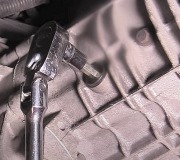Flushing the unit is not the issue. That is just fine because all you are doing is exchanging the fluid. I think this whole "rumor" of "do not flush the transmission because it will then fail" got started because most don't understand what is actually happening when you do flush it.
Most all flush machines heat the fluid or require you to do this when the transmission is hot. That is so that the fluid is thinner and will flush out any contaminates with it. The problem is the transmission coolers trap all of these contaminates/metal in it and when you flush the transmission, it does not remove all the contaminates from the cooler. So when you then start driving the vehicle again, those release from the cooler and cause the transmission to fail.
Ford addressed this on rebuilt transmission with the attached TSB but the same theory applies to just flushing the unit.
That brings me to what you should do. I would flush the transmission on a regular basis as it is more effective then just draining and filling. To do this just disconnect both lines from the cooler so that the cooler is not being flushed and use them to attach the machine.
As for using the DIY flush machines, they are just fine. I have even just put the return line in an empty bucket and the supply line in a full bucket and allowed the pump to pull in the new fluid. When the return line ran clean you shut the vehicle off. Clearly this takes some coordination as you don't want to suck air so one of those set ups would be best.
To identify the return line, I would take one of them off and put it in a bucket and start the engine for just a second and see if it shoots some fluid out. Normally the return line is on the passenger side but this manual does not tell us which it is.
If you are rebuilding the transmission I would replace the cooler. If you are not sure about the cooler, I would replace it and flush the unit before installing the new cooler.
Let me know what questions you have with this.
Images (Click to make bigger)
Saturday, October 24th, 2020 AT 7:20 AM








